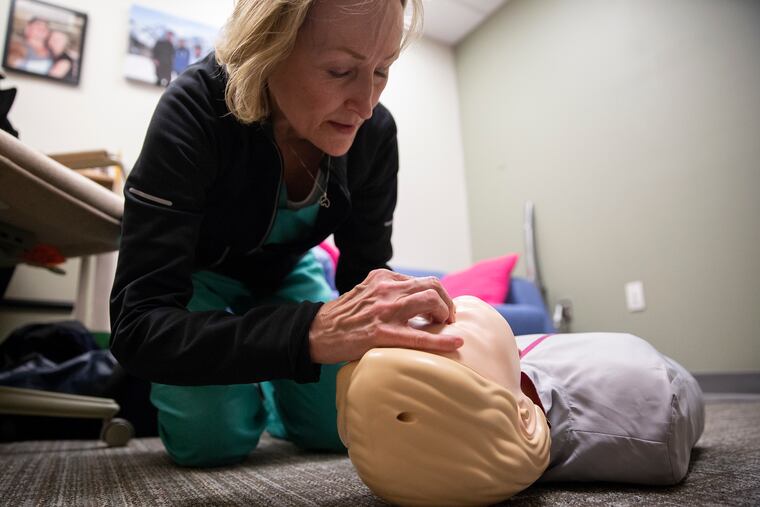Narcan is just the start of fighting the opioid overdose epidemic l Opinion
As a healthcare professional and as a mother, I understand the value of naloxone as a lifesaving medication — one that can enable recovery.

As a cardiac anesthesiologist, I’ve administered naloxone to help patients emerge from anesthesia and to rescue patients with respiratory depression who were unresponsive. At home, I’ve used a nasal spray form of naloxone to resuscitate my youngest son after opioid overdoses.
As a health-care professional and as a mother, I understand the value of naloxone as a lifesaving medication — one that can enable recovery.
Naloxone, more commonly known as Narcan, is a prescription medicine that reverses opioid overdoses by temporarily blocking the effect of opioids, enabling a person to start breathing again. In the last year, communities across the country have spearheaded efforts to increase access to naloxone as part of coordinated plans to reduce opioid overdose deaths. In fact, under Gov. Tom Wolf’s direction, the state of Pennsylvania recently distributed thousands of doses of free naloxone – a critical step that provides the general public with the resources needed to help save lives. It was a powerful and successful initiative.
However, it’s just the first step.
More than 50 percent of victims overdose at home. The startling statistic underscores the demand for family members of people with an opioid use disorder (OUD) to not only be educated on the signs of an overdose but also trained on how to properly respond.
Calling 911 is critical. And so is administering naloxone. But family members and friends must also know how and when to perform rescue breathing and chest compressions.
The average EMS response time is seven minutes. In rural areas, it’s 14 minutes. Given the time gap, a family member or friend is often thrust into the role of a first responder — a terrifying feeling that can be exacerbated if he or she isn’t educated on how to respond in an emergency situation. After administering nasal naloxone — spraying the 4 mg dose into one nostril — it’s critical to monitor the person’s breathing and pulse until EMS arrives. If he or she has a pulse but isn’t breathing, or is gurgling slowly, rescue breathing is needed. If the victim doesn’t have a pulse, it’s necessary to perform CPR, using chest compressions and rescue breathing.
My husband and my 90-year-old father-in-law both administered naloxone with or without life-support measures to my son on separate occasions. You don’t need to be a doctor to save a life. But you do need to know how to administer naloxone and perform basic life support. And you need a plan.
As a community, we are making great strides to destigmatize opioid use. As such, we need to treat this disease and the people suffering from it as we would any other disease that carries a higher risk of sudden death. One intravenous dose of fentanyl-tainted street narcotic can cause the victim to stop breathing. And even if the victim’s heart survives, he or she may be brain-dead if deprived of oxygen. Family members of people with OUD should take a basic life-support course so they are educated on how to respond in an emergency situation. While I know it’s a very difficult situation to imagine, it’s much worse — and much more frightening — to feel helpless in an emergency situation. There are no do-overs in these moments.
When I train others in the community on how to perform a naloxone rescue, I emphasize the need to have frank family discussions. There must be a central location in the home for the naloxone, a plan, and rehearsal. Practice helps to ensure the best possible outcome.
Expanding access to naloxone was the first step. Now, let’s make it a priority to educate and train more people – particularly family members and friends of those with OUD – on basic life-support skills. Good Samaritan laws and PA Act 139 legally protect those who attempt to rescue opioid overdose victims. You can sign up for CPR training via the American Red Cross website. Additional educational resources are available online, including Get Naloxone Now, which teaches overdose intervention and rescue breathing. Get trained now. You could be the hero who puts the overdose victim on the path to recovery.
Bonnie Milas, M.D., is a professor of clinical anesthesiology and critical care in the Perelman School of Medicine at the University of Pennsylvania. The opinions expressed in this article are solely those of the author.